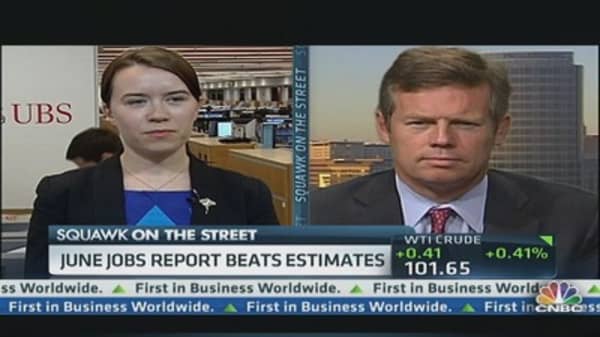Good news on employment would be good news for stocks, if not for the bond market.
Stock futures showed triple digit gains for the Dow when June payrolls came in at a surprising 195,000, but gains were constrained by a jump in bond yields in anticipation the Fed will move forward with its plan to pare back on quantitative easing sooner than some expected. The bond market is signaling that an increasing number of investors believe that will happen as early as September.
Stocks opened higher and turned negative in the first hour before trading higher again.
"Reality sunk in," said Art Cashin, director of floor operations at UBS, said during morning trading. "The key today will be bonds. The fact yields got up above 2.7 [percent] cut the legs out from under them, and they never recovered. Skeleton crews are on desks, and the reaction time is going to be slower." But later in the day, yields rose even higher, to 2.73 percent, and stocks ended the session with strong gains.
The dollar hit a three-year high against a basket of currencies, and gold fell more than 2.5 percent.
(Read More: Strong Jobs Report Is Gold's Nightmare)
The 10-year yield reached 2.73 percent for the first time since August, 2011, above its recent high of 2.66 percent.
The 195,000 nonfarm payrolls added in June was about 30,000 more than expected by economists, though the unemployment rate stayed at 7.6 percent. There were also revisions totaling 70,000 in April and May, which put jobs growth in those months above 190,000.
(Read More: Job Growth Posts Large Gain in June)





